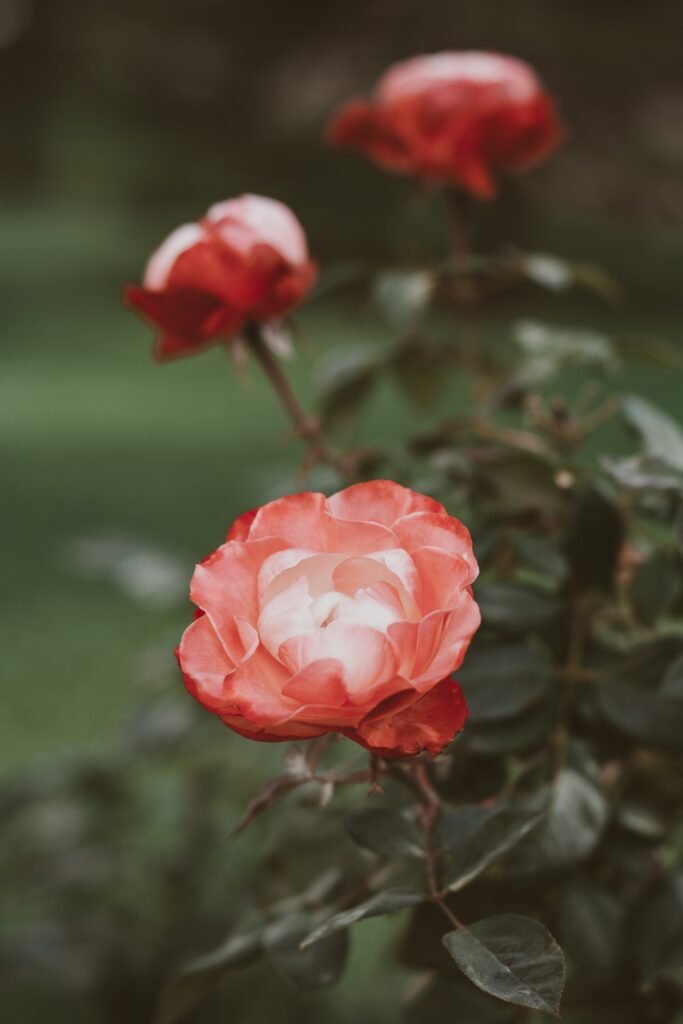Transform your outdoor space into an enchanting oasis with the help of innovative landscape lighting techniques. Illuminate Your Gardens is here to guide you on a journey of enhancing your outdoor ambiance with expertly designed lighting solutions. Whether you want to highlight specific features or create a warm and inviting atmosphere, our landscape lighting design techniques will showcase the natural beauty of your gardens in an entirely new light. From subtle pathway lighting to stunning uplighting effects, let your garden shine brightly and captivate all who lay eyes upon it.
Importance of Landscape Lighting
Landscape lighting plays a crucial role in enhancing the beauty of your garden and transforming it into a magical and inviting space. By strategically placing lights throughout your outdoor area, you can create stunning visual effects, highlight key features, and bring your garden to life, even after the sun goes down. Not only does landscape lighting enhance the aesthetic appeal of your garden, but it also serves practical purposes by increasing safety and security, as well as extending the use of your outdoor spaces well into the evening.
Enhances the beauty of your garden
One of the primary reasons why landscape lighting is essential is because it enhances the beauty of your garden. By illuminating your plants, flowers, trees, and other landscape features, you can create a captivating visual display. The right lighting can add depth, drama, and dimension to your garden, making it a truly enchanting sight to behold. Whether you want to highlight specific focal points or create a warm and inviting ambiance, landscape lighting allows you to showcase the unique elements of your garden, even at night.
Increases safety and security
Another important function of landscape lighting is to increase safety and security in your outdoor spaces. By strategically placing lights along pathways, walkways, and stairs, you ensure that people can navigate your garden safely, even in the dark. Proper illumination also deters intruders and enhances the security of your property. Well-lit areas provide a sense of comfort and discourage potential criminals from lurking around. Additionally, landscape lighting can also help prevent accidents and falls, ensuring the well-being of your family and guests.
Extends the use of outdoor spaces
Garden enthusiasts know the joy of spending time outdoors, especially during warm summer evenings and mild autumn nights. With landscape lighting, you can extend the use of your outdoor spaces well into the evening and maximize your enjoyment of your garden. Whether you’re hosting a barbecue, having a cozy family gathering, or simply enjoying a quiet moment of relaxation, properly illuminated outdoor areas create a welcoming and hospitable atmosphere. Landscape lighting allows you to continue using your patio, deck, or seating areas long after the sun has set, creating memorable experiences and fostering a deeper connection with your outdoor surroundings.
Types of Landscape Lighting Fixtures
When it comes to landscape lighting, there are various types of fixtures to choose from, each serving a specific purpose and creating distinct lighting effects. Understanding the different types of landscape lighting fixtures can help you select the right ones for your garden and achieve the desired ambiance.
Path Lights
Path lights are a popular choice for illuminating walkways, driveways, and garden paths. These fixtures are typically low to the ground and provide a soft and inviting glow, ensuring safe navigation throughout your garden. Path lights come in a variety of styles and finishes, allowing you to select options that complement your landscape design and add a touch of elegance to your outdoor spaces.
Spotlights
Spotlights are versatile lighting fixtures that allow you to direct a focused beam of light onto specific landscape features. Whether you want to highlight a stunning tree, a beautiful flower bed, or a unique architectural element, spotlights are ideal for creating dramatic and eye-catching effects. These powerful fixtures are adjustable, allowing you to control the angle and intensity of the light to achieve the desired illumination.
Floodlights
Floodlights are broader and more powerful than spotlights, providing a wide and intense beam of light. These fixtures are commonly used to illuminate large areas of the garden, such as expansive lawns or outdoor entertaining spaces. Floodlights can enhance the overall visibility and security of your garden, ensuring that every corner is well-lit.
Deck and Step Lights
Deck and step lights are specifically designed to illuminate the edges and steps of decks, stairs, and other elevated surfaces. These fixtures improve safety by clearly defining the boundaries and preventing tripping hazards. Deck and step lights can also add a touch of sophistication to your outdoor areas, creating a visually appealing look while simultaneously serving a practical purpose.
Hanging Lights
Hanging lights, such as lanterns or string lights, are a popular choice for creating a warm and inviting atmosphere in outdoor seating areas, gazebos, or pergolas. These fixtures provide a soft and gentle glow, perfect for creating a cozy ambiance during evening gatherings or intimate dinners. Hanging lights come in various styles and designs, allowing you to align them with your personal taste and the overall aesthetic of your garden.
Wall Lights
Wall lights are fixtures that are mounted on walls, fences, or other vertical surfaces. These lights can accentuate the architectural features of your garden, such as a beautiful stone wall or a decorative fence. Wall lights are available in a range of styles, including sconces and lanterns, providing both functional illumination and decorative appeal.
Underwater Lights
For those with water features, such as ponds or fountains, underwater lights can add a captivating and enchanting element to your garden. By illuminating the water from below, these fixtures create a mesmerizing effect, giving your garden a tranquil and magical ambiance. Underwater lights are waterproof and designed to withstand the conditions of being submerged, ensuring long-lasting performance and enhancing the visual appeal of your water features.

This image is property of images.pexels.com.
Choosing the Right Lighting Fixtures
Selecting the right lighting fixtures for your garden is crucial to achieve the desired lighting effects and complement the overall design of your outdoor space. Here are some important considerations when choosing landscape lighting fixtures:
Consider the purpose and function
Start by considering the purpose and function of the lighting fixtures. Are you aiming to create a specific ambiance or highlight certain features? Understanding your lighting goals will help you determine the types of fixtures that are suitable for your garden.
Determine the desired ambiance
Think about the mood and atmosphere you want to create in your garden. Do you prefer a soft and romantic ambiance, or a bright and energetic one? Different fixtures and bulbs can produce varying levels of brightness and color temperatures, so choose ones that align with the desired ambiance.
Select fixtures that complement the landscape design and architecture
Your lighting fixtures should harmonize with the overall landscape design and architecture of your property. Consider the style and materials used in your garden, and select fixtures that complement these elements. For example, if your garden has a modern design, sleek and minimalist fixtures may be the best choice.
Choose energy-efficient and long-lasting options
Opt for fixtures that are energy-efficient and have long lifespans. LED lighting technology is an excellent choice as it consumes less energy and has a longer lifespan compared to traditional incandescent or halogen bulbs. Investing in energy-efficient fixtures not only helps reduce energy consumption but also lowers your utility bills in the long run.
By considering these factors, you can choose the right lighting fixtures that will bring out the best in your garden and meet your specific requirements.
Placement Techniques for Landscape Lighting
The placement of landscape lighting fixtures is crucial in achieving the desired lighting effects and ensuring that every corner of your garden is properly illuminated. Here are some placement techniques to consider:
Highlighting focal points
Identify the key features of your garden that you want to highlight. This could be a stunning tree, a beautiful sculpture, or a unique architectural element. Place spotlights or floodlights strategically to draw attention to these focal points and create a captivating visual display.
Creating depth and dimension
To add depth and dimension to your garden, use a combination of lighting techniques. Place lights at different distances from the objects you want to illuminate to create a sense of depth. By layering the lights, you can highlight various elements, creating a visually appealing and dynamic landscape.
Pathway and walkway illumination
Ensure safe navigation throughout your garden by placing path lights along pathways and walkways. These fixtures not only provide functional illumination but also enhance the aesthetic appeal of your garden, guiding visitors through your outdoor spaces with ease.
Accentuating architectural features
If your garden features unique architectural elements, such as columns, arches, or pillars, use wall lights or spotlights to accentuate their beauty. By placing lights near or on these features, you can highlight their texture, design, and craftsmanship, adding visual interest to your garden.
Balancing light distribution
Consider the overall balance of light distribution in your garden. Avoid creating areas that are too bright or too dark by strategically placing lights throughout your outdoor space. Aim for a harmonious and even distribution of light, ensuring that every corner is illuminated while creating a cohesive and visually pleasing overall effect.
By following these placement techniques, you can effectively showcase the beauty of your garden and create a warm and inviting atmosphere.

This image is property of images.pexels.com.
Lighting Techniques for Different Garden Elements
Different garden elements require specific lighting techniques to accentuate their beauty and create the desired lighting effects. Here are some lighting techniques for various garden features:
Illuminating trees and shrubs
To bring out the beauty of your trees and shrubs, use uplighting techniques. Place spotlights or ground-mounted fixtures at the base of the tree or shrub and angle the light upward to highlight their canopy or foliage. This technique creates a stunning visual effect, drawing attention to the height and texture of these plants.
Accent lighting for sculptures and art installations
If your garden boasts sculptures or art installations, accent lighting can help highlight their intricate details and create a focal point. Use spotlights or floodlights positioned at different angles to cast dramatic shadows and emphasize the contours and texture of the artwork.
Water features and pond lighting
For water features such as fountains, waterfalls, or ponds, underwater lights can create a magical and ethereal effect. Submerge waterproof fixtures in the water to illuminate from below, highlighting the movement and reflections of the water. The play of light on the surface creates a serene and captivating ambiance.
Patio and seating area illumination
Outdoor seating areas, patios, or decks can benefit from a combination of lighting techniques. Use hanging lights or string lights to create a warm and inviting atmosphere, while incorporating deck and step lights for practical illumination and safety. By layering different types of lighting, you can achieve a harmonious and enjoyable outdoor setting.
Garden wall and fence lighting
Accentuate the boundaries of your garden by illuminating garden walls or fences. Wall lights or spotlights can be mounted on these vertical surfaces to highlight their texture and provide functional illumination. This technique adds depth and character to your garden while ensuring safety and security.
Vegetable and flower bed lighting
To show off your meticulously curated flower beds or vegetable gardens, consider installing low-profile or ground-based fixtures. These lights can be discreetly positioned to highlight the colors and textures of your plants, creating a captivating nighttime display. Lighting flower beds not only enhances their aesthetic appeal but also provides an opportunity for nighttime gardening or tranquil strolls in your garden.
By employing the appropriate lighting techniques for each garden element, you can transform your outdoor space into a picturesque and magical sanctuary.
Using Different Lighting Effects
In addition to the various lighting techniques, different lighting effects can further enhance the overall ambiance of your garden. Here are some popular lighting effects to consider:
Uplighting
Uplighting involves positioning fixtures at ground level or below to cast light upward onto trees, sculptures, or architectural elements. This effect creates dramatic illumination, accentuating the height and texture of objects while providing a sense of grandeur.
Downlighting
Downlighting, also known as moonlighting, involves placing fixtures in elevated positions, such as trees or pergolas, to cast soft and gentle light downward. This effect mimics the moon’s natural glow, providing a soothing and ethereal ambiance. Downlighting is particularly effective in creating a romantic or serene atmosphere in outdoor seating areas or garden pathways.
Moonlighting
Silhouetting involves placing a light source behind an object, creating a striking silhouette effect. This technique is ideal for highlighting the architectural features of your garden, such as statues or cascading water features. The contrast between the dark silhouette and the illuminated background adds depth and drama to your garden.
Shadowing
Shadowing is a technique where light is positioned behind a tree or shrub to create intriguing shadow patterns on walls or other surfaces. This effect adds an element of mystery and intrigue, captivating the viewer and showcasing the unique shapes and forms of plants.
Grazing
Grazing involves placing fixtures close to a textured surface, such as a stone or brick wall, to highlight its texture and create interesting shadows. This effect adds depth and dimension to your garden, making it visually captivating and visually appealing.
Cross lighting
Cross lighting involves positioning lights at opposite angles to illuminate an object from both sides. This effect enhances the three-dimensional appearance of objects, creating a sense of depth and presence. Cross lighting is commonly used to showcase sculptures, garden structures, or trees.
By incorporating these different lighting effects, you can create a truly mesmerizing and captivating outdoor environment that reflects your personal style and vision.

This image is property of images.pexels.com.
Utilizing Automation and Controls
Automation and controls can greatly enhance the convenience and flexibility of your landscape lighting system. Here are some ways to utilize automation and controls in your garden:
Smart lighting systems
Smart lighting systems allow you to control your landscape lights using your smartphone, tablet, or voice assistants like Amazon Alexa or Google Assistant. With these systems, you can easily adjust the brightness, colors, and schedules of your lights, all from the comfort of your home or anywhere with an internet connection. Smart lighting systems also offer features like remote access, energy monitoring, and integration with other smart home devices for a seamless and personalized lighting experience.
Timers and motion sensors
Installing timers and motion sensors can help automate your landscape lighting and improve energy efficiency. Timers allow you to set specific times for your lights to turn on and off, ensuring that your garden is always well-lit, even when you’re not home. Motion sensors, on the other hand, detect movement and automatically activate the lights, providing added security and reducing energy waste.
Dimming and color-changing options
For ultimate control over the ambiance of your garden, consider incorporating dimming and color-changing options into your lighting system. Dimmable lights allow you to adjust the intensity of the light, creating different moods and settings. Color-changing lights enable you to switch between a spectrum of colors, allowing you to match the lighting to different occasions and create customized lighting displays.
Remote control functionality
Remote control functionality enables you to operate your landscape lights from a centralized location, such as your home’s interior or a dedicated control station. This convenient feature eliminates the need to manually adjust each individual light, simplifying the process and saving you time and effort.
Integration with home automation systems
Integrating your landscape lighting with a home automation system offers seamless control and coordination with other smart devices in your home. For example, you can program your lights to automatically turn on when your security system is armed, or synchronize them with your outdoor speakers for immersive entertaining experiences. Comprehensive integration allows you to create a truly connected and intelligent lighting system.
By utilizing automation and controls in your landscape lighting, you can optimize the convenience, energy efficiency, and functionality of your outdoor lighting system.
Considerations for Outdoor Lighting Layout
When planning the layout of your outdoor lighting, there are several important considerations to keep in mind. These factors can help you achieve a balanced and visually appealing lighting design while ensuring the overall safety and functionality of your outdoor spaces.
Balancing light intensity
A key consideration is balancing the intensity of the light throughout your garden. Avoid creating areas that are overly bright or excessively dark. Strive for a cohesive lighting design that provides adequate illumination while maintaining a comfortable and appealing atmosphere.
Avoiding glare and light pollution
Glare and light pollution can detract from the overall aesthetic and functionality of your outdoor lighting. To minimize glare, ensure that the light source is shielded or angled away from direct view. Additionally, consider the impact of your lighting on neighboring properties and the night sky. Choose fixtures and bulbs that have appropriate shielding or use accessories to prevent light from spilling into unwanted areas.
Maintaining consistency in color temperature
Consistency in color temperature is essential to ensure a harmonious and visually pleasing lighting design. When selecting bulbs, consider the color temperature, which is measured in Kelvins (K). Warmer temperatures (around 2700K-3000K) create a cozy and inviting ambiance, while cooler temperatures (around 4000K-5000K) result in a crisper and brighter light. Strive for consistency in color temperature throughout your garden for a cohesive and uniform appearance.
Considering wiring and power sources
When designing your outdoor lighting layout, take into account the practical aspects of wiring and power sources. Ensure that there are accessible power outlets or wiring connections near the areas where you plan to install your fixtures. If needed, consult with a professional electrician to ensure safe and proper installation.
Addressing maintenance and accessibility
Consider the accessibility and maintenance requirements of your lighting fixtures. Ensure that fixtures are easily accessible for cleaning, bulb replacement, or any necessary repairs. Additionally, choose fixtures that are designed for outdoor use and can withstand the elements, ensuring long-lasting performance and minimal maintenance needs.
By considering these factors during the layout planning phase, you can create a well-designed and functional outdoor lighting system that meets your specific needs and preferences.
Energy-Efficient and Sustainable Lighting Practices
In today’s environmentally conscious world, it is important to consider energy-efficient and sustainable lighting practices. By adopting these practices, you can reduce your carbon footprint, minimize energy waste, and promote a greener future. Here are some energy-efficient and sustainable lighting practices for your garden:
LED lighting technology
LED (Light Emitting Diode) lighting technology is one of the most energy-efficient options available for landscape lighting. LED bulbs consume significantly less energy than traditional incandescent or halogen bulbs, while providing comparable or even superior illumination. LEDs also have a much longer lifespan, helping you save on maintenance and replacement costs over time.
Solar-powered fixtures
Another sustainable lighting option is solar-powered fixtures. These fixtures harness energy from the sun during the day and store it in rechargeable batteries. At night, the stored energy is used to power the lights. Solar-powered fixtures are not only environmentally friendly but also offer flexibility in placement, as they do not require wiring connections. However, it is important to consider the amount of sunlight your garden receives to ensure optimal charging and lighting performance.
Use of timers and sensors
Incorporating timers and sensors into your lighting system can contribute to energy efficiency. Timers allow you to set specific times for your lights to turn on and off, ensuring they are only active when needed. Motion sensors detect movement and activate the lights, providing light on demand and reducing unnecessary energy consumption.
Proper light planning to minimize energy waste
Proper light planning involves assessing the specific lighting needs of your garden and using the appropriate fixtures and bulbs. By carefully selecting the right lighting levels and avoiding excessive lighting, you can minimize energy waste and avoid unnecessary light pollution. Focus on illuminating specific areas or features that warrant attention, rather than illuminating the entire garden uniformly.
Maintenance and replacement of outdated fixtures
Regular maintenance and the replacement of outdated fixtures play a vital role in sustainable lighting practices. Keeping your fixtures clean and free of debris ensures optimal performance and longevity. When it is time to replace old fixtures, consider upgrading to more energy-efficient options to reduce energy consumption and contribute to a greener environment.
By incorporating these energy-efficient and sustainable lighting practices, you can enjoy a beautifully illuminated garden while minimizing your environmental impact.
Professional Landscape Lighting Installation
While DIY projects can be satisfying, hiring a professional for landscape lighting installation offers numerous benefits. Here are some reasons why consulting a professional is worth considering:
Design expertise and creativity
Professional landscape lighting installers are trained in design principles and possess the artistic eye necessary to create an impeccable lighting scheme for your garden. They have the knowledge to bring out the best features of your outdoor space, enhance its visual appeal, and create a cohesive and stunning lighting design. Their creativity and expertise ensure that your garden becomes a captivating oasis, showcasing your unique taste and style.
Proper installation techniques
Improper installation of lighting fixtures can result in safety hazards, poor performance, and premature failure. Professionals are well-versed in the correct installation techniques, ensuring that each fixture is securely and appropriately positioned. Their expertise guarantees that your lighting system is properly wired, avoiding any potential electrical issues or safety concerns.
Ensure safety and compliance
Hiring a professional ensures that the electrical work is performed according to industry standards and code requirements. Compliance with safety regulations and building codes is crucial to protect your property and ensure the safety of your loved ones. Professionals are knowledgeable about local regulations and can navigate the complexities of obtaining permits, if required.
Maintenance and troubleshooting
Professional installers not only handle the initial installation, but they can also assist with maintenance and troubleshooting. They have the expertise to identify and rectify any issues that may arise with your lighting system, ensuring that it operates smoothly and efficiently. By entrusting the maintenance and troubleshooting to professionals, you can have peace of mind knowing that your lighting system will always be in optimal condition.
Investing in professional landscape lighting installation offers a comprehensive and worry-free experience, ensuring that your garden is beautifully and professionally illuminated.
In conclusion, landscape lighting is a valuable addition to your garden, enhancing its beauty, increasing safety and security, and extending the enjoyment of your outdoor spaces. By understanding the types of lighting fixtures available and considering the desired lighting effects, you can create an enchanting and inviting atmosphere. Thoughtful placement techniques, along with specific lighting effects, can further accentuate the different elements of your garden. Automation and controls add convenience and flexibility, while energy-efficient and sustainable practices contribute to a greener environment. Whether you choose to embark on a DIY project or hire a professional, landscape lighting installation allows you to fully realize the potential of your garden, creating a captivating and visually stunning outdoor sanctuary.
